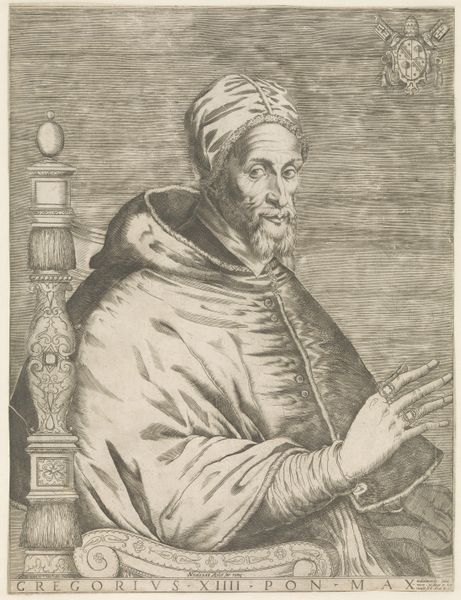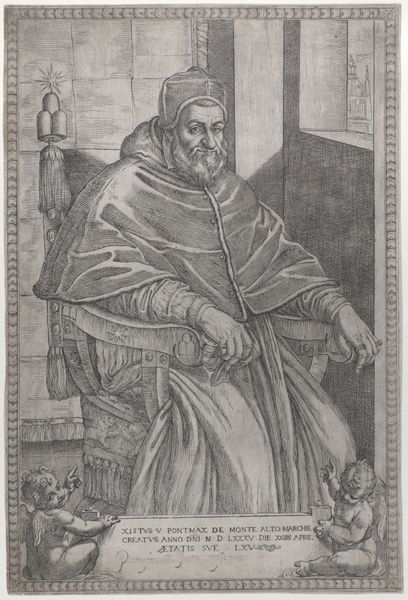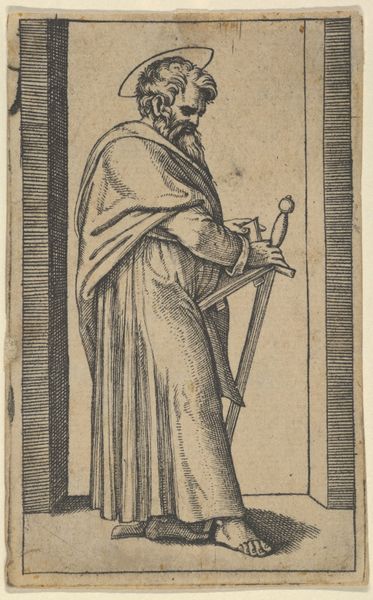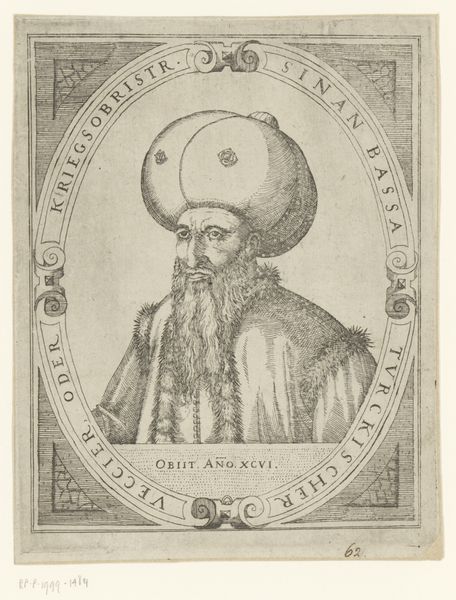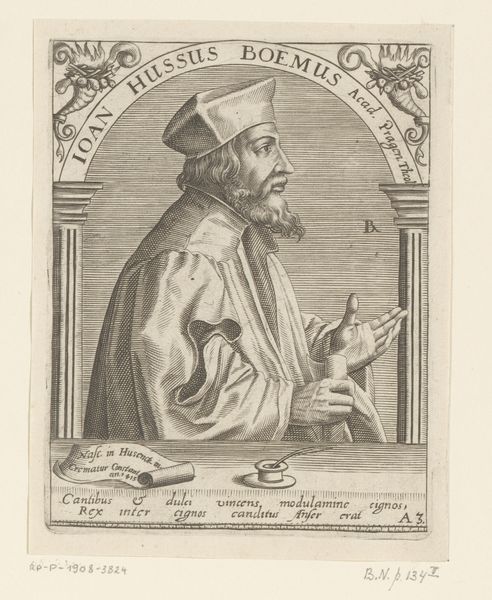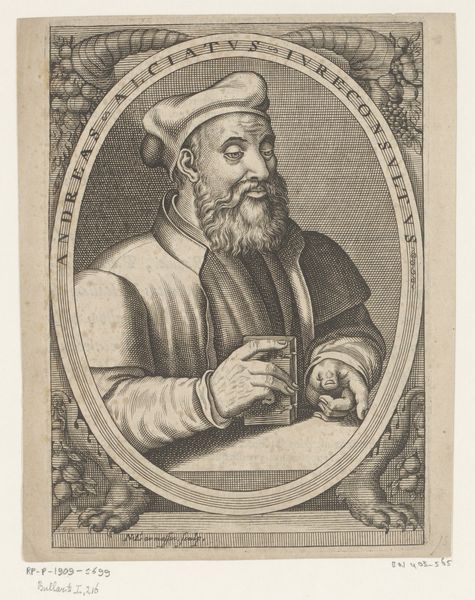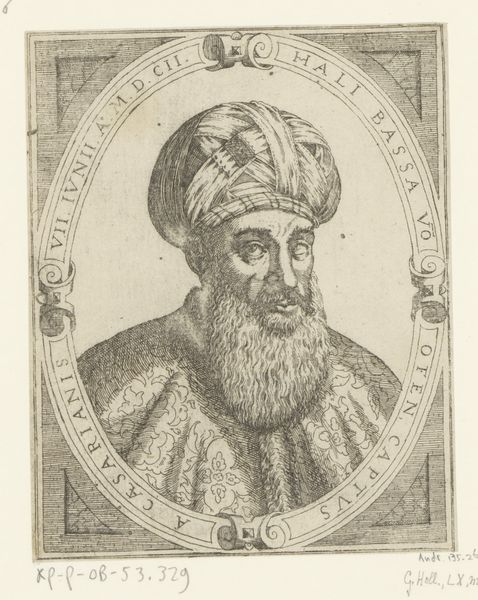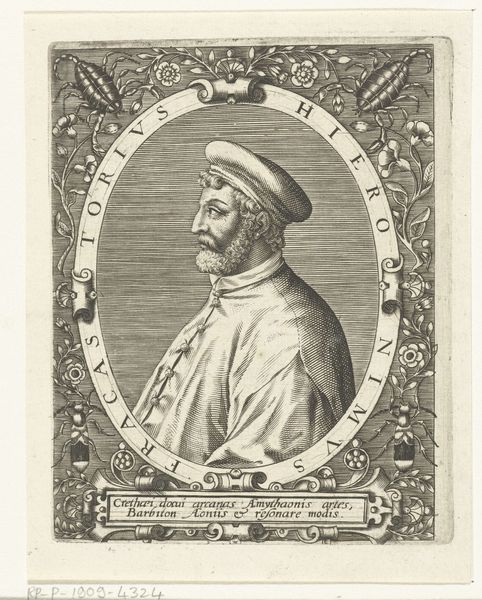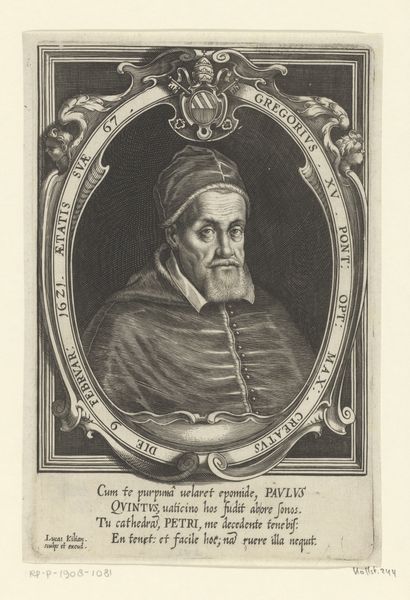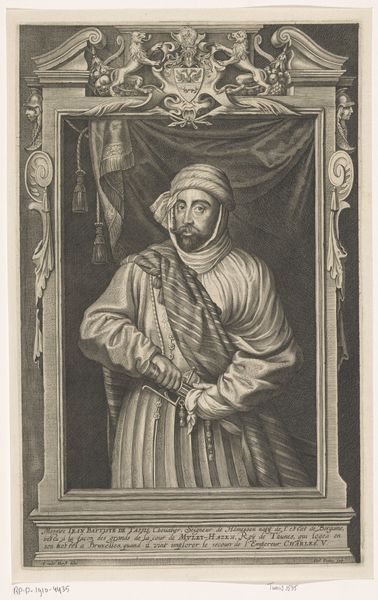
print, engraving
#
portrait
# print
#
portrait drawing
#
history-painting
#
italian-renaissance
#
engraving
Copyright: National Gallery of Art: CC0 1.0
Curator: What strikes me most is the weightiness of this print – both literally, as a durable object carrying an image across centuries, and metaphorically, in how it depicts power. We're looking at a 1547 engraving of King Ferdinand of Austria. Editor: The first thing I see is his nose! It's really prominent, isn't it? Like it's got its own narrative arc. And his helmet… I get the power thing, but it feels almost cartoonish, in a way. I feel as if he could be grumpy but also that he can get some giggles with friends. Curator: Well, remember, these portraits weren't about photographic realism. They were about conveying status and authority. The helmet, the armor suggested military strength. Also, observe the symbols—the crests flanking the arched window give further information to the viewer about his lineage and allegiances. It’s a carefully constructed image of kingship. Editor: But even those symbols... they look more like medieval clip art. Not to diminish the intent, but it has aged into an odd simplicity. I'm interested in how our perceptions change what an image actually _does_ over time. It wants to shout 'power', and my brain whispers, 'quaint.' It makes you question if he actually feels what the clothes and artifacts should be communicating about him. Curator: Exactly! What we perceive as "quaint" now might have been cutting-edge in its time. Italian Renaissance engravings like this were vital in disseminating images and ideas across Europe. These prints allowed people who would never see the king in person to form an impression. It became cultural shorthand and political communication at the same time. Editor: So it was like Instagram for the 16th century, if Instagram had very sharp, unforgiving lines! Thinking about this as a political tool is kind of fun though, a little portrait of political communication that is a testament to how our perspective of power shifts and changes over time. It has definitely made me appreciate what portraits like this had to contribute and how the artist chose what items to represent. Curator: And, isn't it remarkable to ponder how a small print continues to hold significance and stir dialogue centuries after its creation? It showcases a fascinating case on visual culture that keeps re-interpreting itself. Editor: Agreed. You really begin to get this almost time capsule of culture just encapsulated and preserved here for us to reflect on it today. Pretty cool to think about actually.
Comments
No comments
Be the first to comment and join the conversation on the ultimate creative platform.

